The concept of an American Freedom Train arose after WWII. It was a chance for Americans to reflect on their citizenship at a time when the United States was finding new roles in world affairs. The project was funded by donations and not at government expense.
The American Heritage Foundation was created in 1947 to oversee the train, its contents, policies, and route of travel. Items exhibited on the train included the Declaration of Independence, an original copy of the Constitution, the Emancipation Proclamation, an original copy of the Gettysburg Address, the Iwo Jima flag, surrender documents from the Japanese and Germans at the end of WWII, the British Magna Carta, and six historical flags.
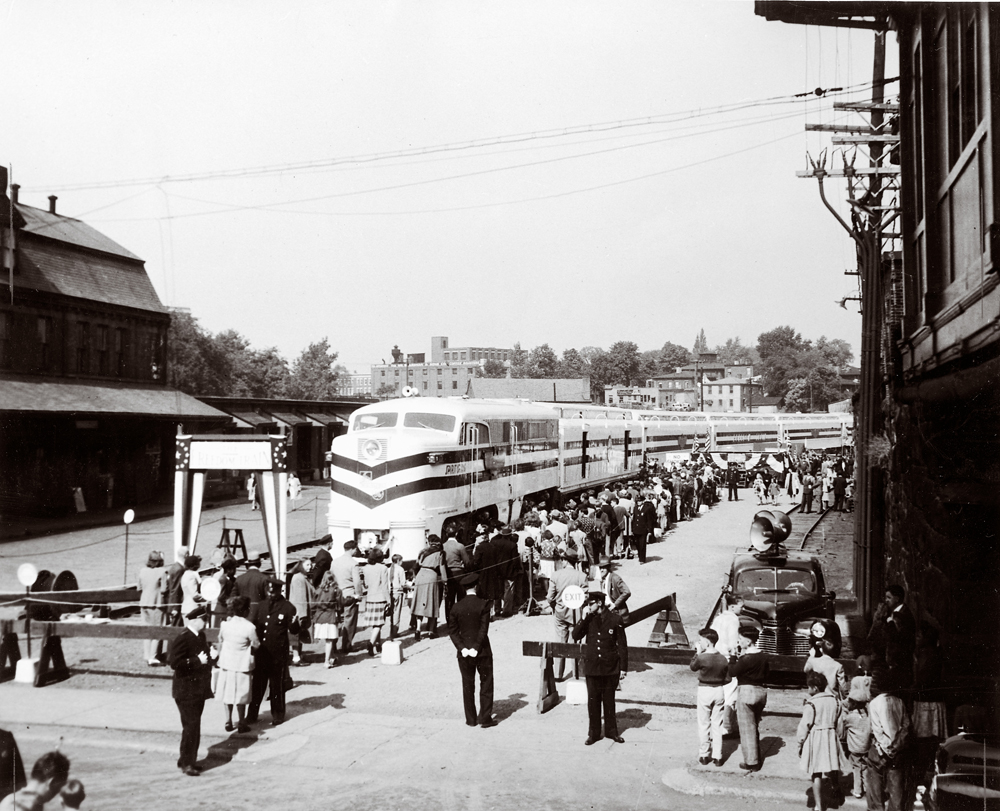
The locomotive was built by Alco in August 1947, a PA numbered 1776 and named the “Spirit of 1776.” The engine and all seven cars were painted white with red and blue stripes down the sides. The passenger cars were donated by the Atchison, Topeka & Santa Fe; Pennsylvania RR; and the Pullman Co. These included a baggage car used as the train’s power/tool car, three cars reconfigured as display cars for the documents, and three Pullman cars for the train’s staff.
The train traveled across the country from September 1947 to January 1949. Its trip was 37,160 miles long and it stopped at 326 communities. Three and a half million Americans viewed the exhibit, with some waiting six hours to get onboard.
All cars were returned to their owners after 1949 and went back into service. The locomotive was returned to Alco, which later sold it to the Gulf, Mobile & Ohio RR. The engine was later scrapped. Only one of the original cars, the Glen Fee, still exists; it’s on display at the Galveston Island Railroad Museum.
The American Freedom Train ran again in 1975 and ’76 in celebration of America’s Bicentennial. This time, the engine was ex-Nickel Plate 2-8-4 No. 759. Over a 21-month period, the train was visited by about seven million Americans, with millions more viewing trackside.
It’s no wonder that toy train models of the American Freedom Train are still popular today.
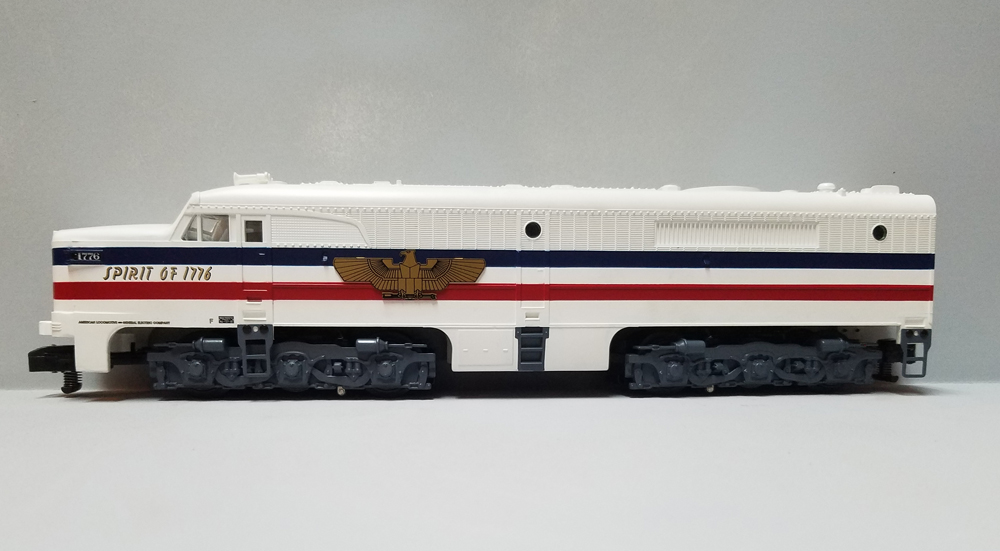
In 2008, Lionel released an American Flyer set (No. 49662) and a two-car pack (No. 49922, coach and diner). In 2009, they added a single display car (No. 49929). Over time, I purchased these items secondhand on Trainz.com.
Lionel did a great job replicating the 1947-49 train. The engine is attractive and contains three geared power axles per truck. The cars are the Lionel heavyweights first tooled in 2006 in Union Pacific livery.
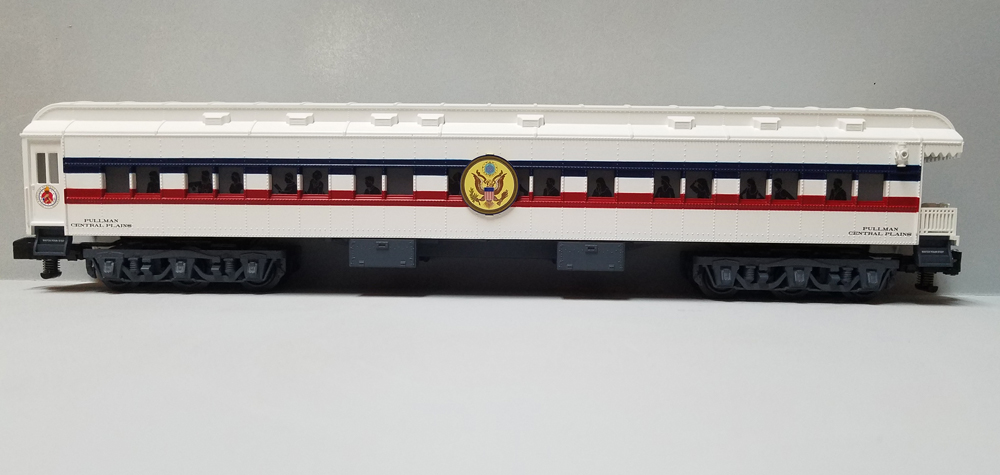
The engine has both GE and Alco symbols on the nose and a large golden eagle on each side. The baggage car (from the Santa Fe) has a large round Great Seal of the United States on one side and the seal of the American Heritage seal on the other.
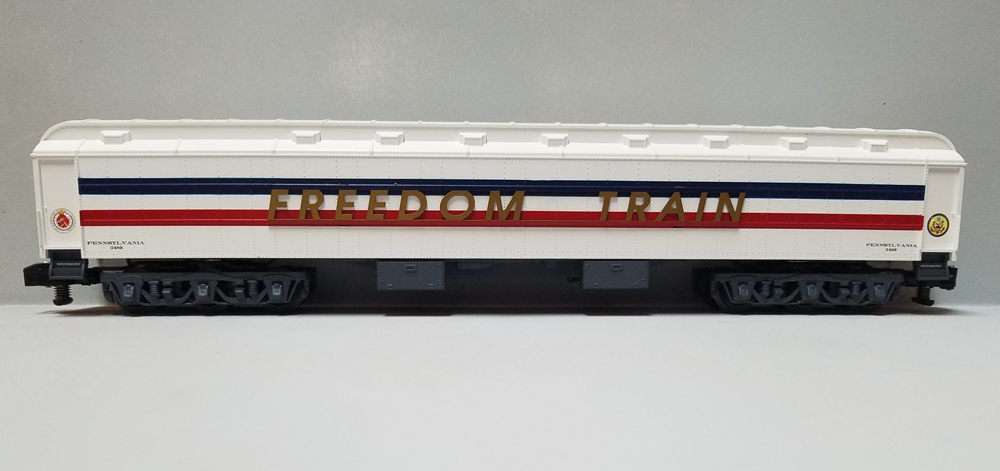
The next three cars (from the Pennsylvania RR) were reconfigured to be exhibit cars. Two had the large eagles and the one in between had “Freedom Train” lettering on the sides. The next three were furnished by Pullman, with the last being an observation car. The first Pullman car has large eagles, the second the words “Freedom Train,” and the observation has the Great Seal on its sides with a small American Heritage Foundation seal on the observation platform.
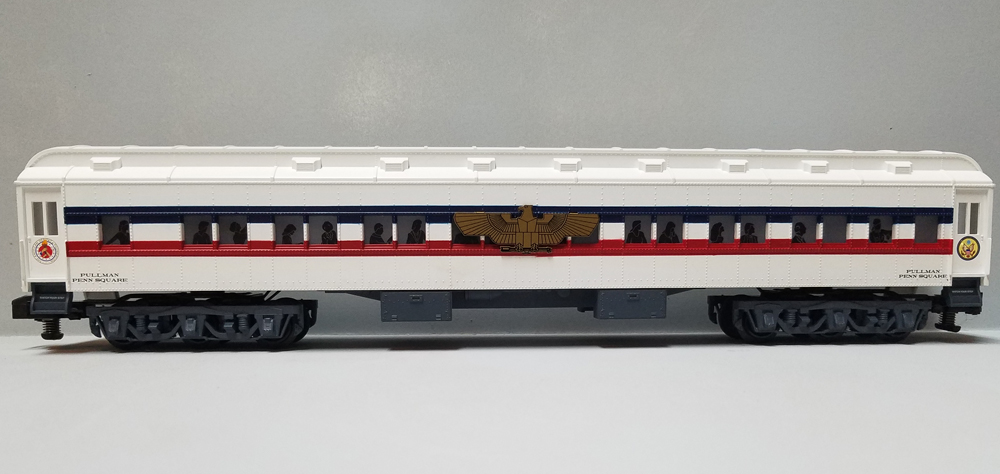
The tooling to produce the exhibit cars was new. The tooling removed the windows of Santa Fe coaches. The symbols and lettering on the cars and engine were separately applied and not painted on. This had to be time-consuming and expensive.
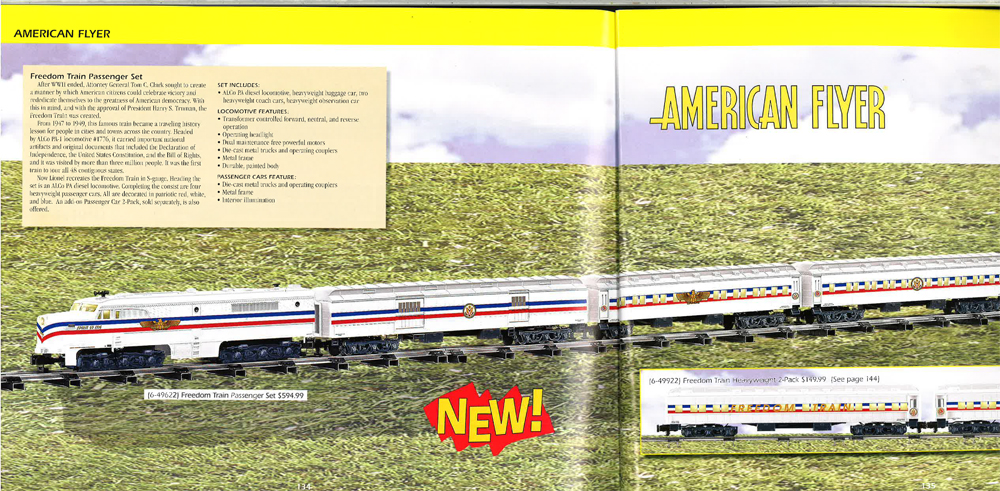
One thing I discovered in my research was that Lionel reversed the images on the two Pullman coaches. I thought my train was a mistake, but a friend checked his cars and the images were reversed on his, also.
Once I had purchased all the components of the train, I unboxed and inspected everything. I lubricated the engine and replaced the brittle traction tires. I lubricated all axles on the cars and cleaned the wheels with a wire wheel in a motor tool. I couldn’t believe how much dirt came off the 84 wheels of the cars.
My Freedom Train is now fully functional, and I enjoy watching it run. I hope you enjoyed learning about it.
Learn more
Freedom Train steam locomotives
Review of the K-Line version of the Freedom Train
Trains Magazine, December 2004, p. 84






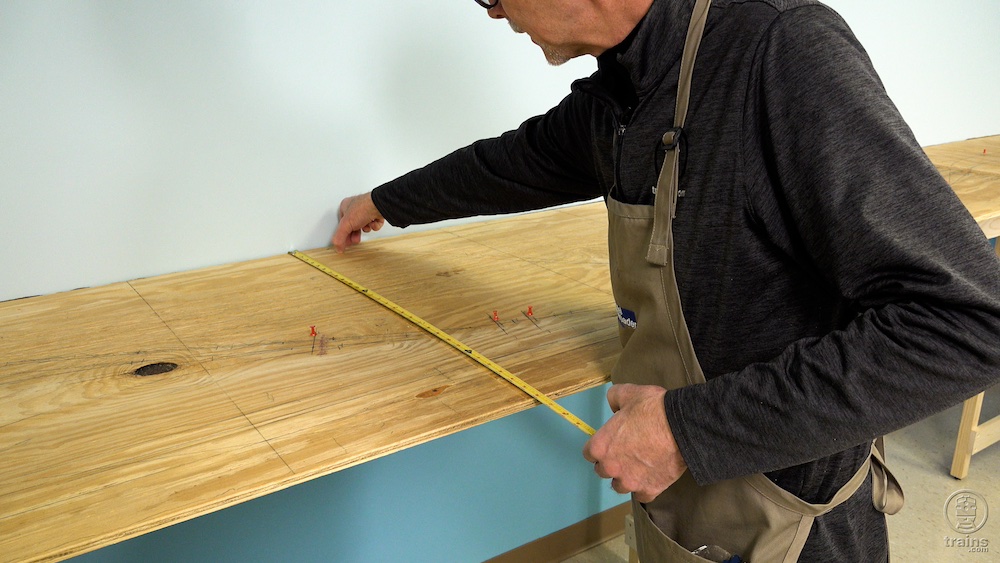
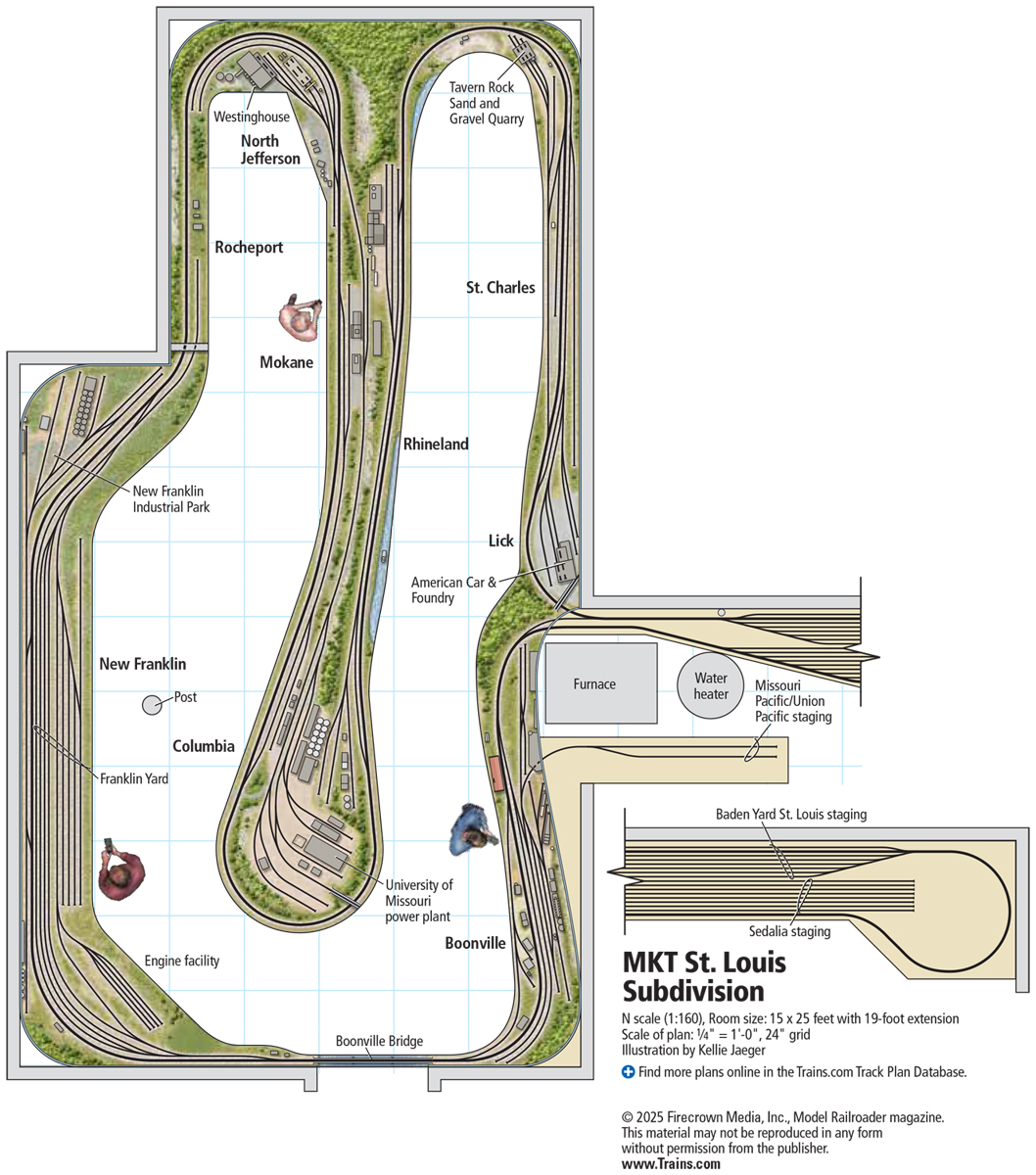

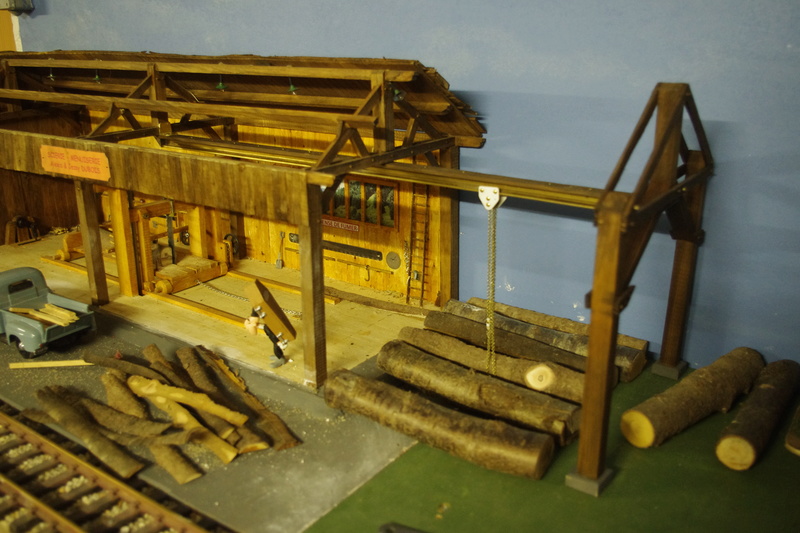




There were several steam locomotives that pulled the Bicentennial Freedom Train, including a Reading T-1, #2101 I think, and Southern Pacific GS-4 #4449 in red white and blue. I saw 4449 when the train came to Jackson, MS. Bachmann had an HO set back then.